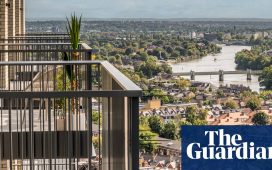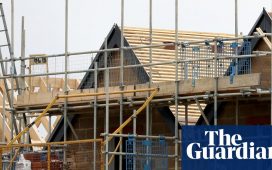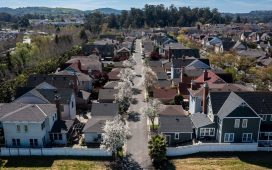Stay informed with free updates
Simply sign up to the UK house prices myFT Digest — delivered directly to your inbox.
UK house prices returned to growth in May despite a rise in mortgage rates that has damped the recovery, according to data published on Friday.
The lender Nationwide said house prices increased by 0.4 per cent between April and May, following two consecutive months of decline, taking the annual rate of growth to 1.3 per cent.
Robert Gardner, Nationwide’s chief economist, said the market was “showing signs of resilience” as stronger real wage growth bolstered consumer confidence — despite a recent rise in quoted mortgage rates as hopes of an imminent interest rate cut by the Bank of England faded.
However, separate data released on Friday by the BoE suggested consumers were acting cautiously, with mortgage approvals falling slightly in April, consumer credit dropping sharply and households depositing a record £11.7bn into tax-free ISAs before the annual deadline.
Analysts said the drop in consumer credit, from £1.4bn in March to £0.7bn in April, was partly the result of bad weather that had put off shoppers and had potentially deterred house-hunters from viewing properties.
Rob Wood, chief UK economist at consultancy Pantheon Macroeconomics, said consumers were already putting aside enough of their income to rebuild savings and would soon be “willing to spend more”. He added that higher mortgage rates had “slowed the housing market but not derailed it”.
Investors are now betting that Britain’s central bank will cut interest rates only once in 2024 as inflation has proved stickier than expected, falling by less than predicted to 2.3 per cent last month. The BoE’s benchmark interest rate stands at a 16-year high of 5.25 per cent.
The interest rate quoted on a typical two-year fixed-rate mortgage fell to 4.73 per cent in January but has risen back to 5 per cent in recent weeks, limiting the scope for the housing market to recover.
The BoE data on Friday suggested this rise in quoted mortgage rates had damped a housing market recovery.
The central bank reported 61,100 net mortgage approvals for house purchase in April, a slight drop from March’s figure of 61,263, showing that a recovery in activity that began last autumn had come to a halt.
Net mortgage lending rose from £0.5bn in March to £2.4bn in April, the BoE said, but analysts noted that this would result from mortgages approved earlier in the year, when rates were lower.
The BoE said the “effective” interest rate — the rate actually paid on new mortgages — was still only marginally higher in April at 4.74 per cent.
Andrew Wishart, analyst at consultancy Capital Economics, said the big picture remained one of a stagnant market that was unlikely to regain momentum until the BoE began reducing interest rates.
“Taking a step back, house prices have been flat for a year and a half, with the slight increase in May leaving them in line with their January 2023 level,” he said.
Wishart added that prices could slip “modestly” in the next few months, given signs that more homes were coming up for sale and mortgage rates were still high.
Gardner said the general election in July was unlikely to prevent a recovery in prices given Nationwide’s analysis of house price movements before and after previous polls.
“Past general elections do not appear to have generated volatility in house prices or resulted in a significant change . . . Broader economic trends appeared to dominate any immediate election-related impacts,” he said, adding that it was less clear whether activity might be affected.
The number of mortgage approvals slowed sharply in the run-up to Labour’s landslide election victory in 1997, as well as a pandemic-related slump immediately after the 2019 election, won by the Conservatives.










